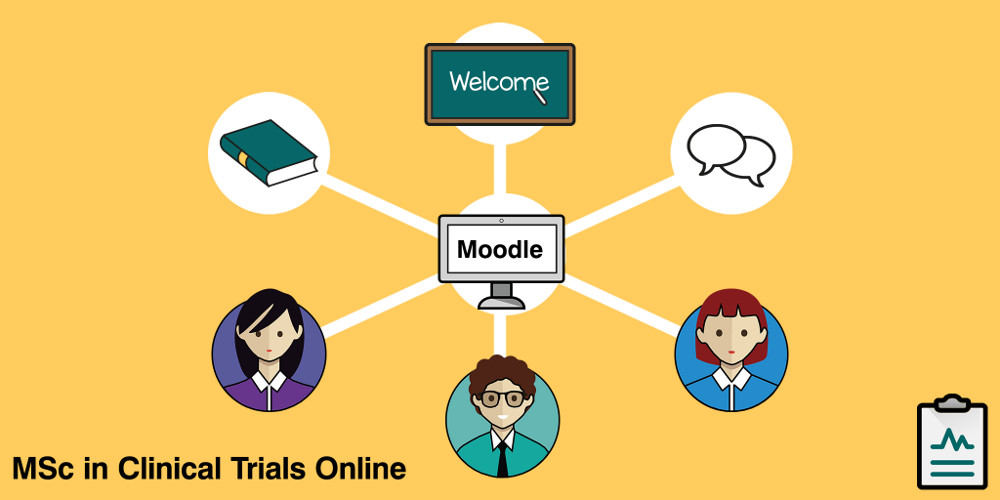 In this post, Chris Sheridan, eLearning coordinator for the Clinical Trials programme with the Usher Institute, demonstrates how Moodle can operate as an online induction tool…
In this post, Chris Sheridan, eLearning coordinator for the Clinical Trials programme with the Usher Institute, demonstrates how Moodle can operate as an online induction tool…
As we know through our students, or perhaps firsthand, interacting with a new course is overwhelming whatever the setting, be it online or on-campus. Fully online students may struggle without physical presence and friendly faces to keep them moving in the right direction. It can be an isolating and stressful time.
Making the virtual environment a welcoming place that students will want to explore, hang around and come back to is key to inducting them in the plethora of information that comes with matriculation. A positive first experience with the learning platform they’ll be interacting with for the duration of their studies can create an impetus that motivates them to login in as a regular part of their day.
Each School, programme and department has their own information and signposting that contributes to a successful induction. Even induction services themselves can be a bewildering choice (e.g., we offer library inductions and Information Services have IT inductions) so it makes sense to bring all of these together into a one-stop shop that students can easily access and refer back to.
For the MSc in Clinical Trials Online we have created an online induction course in Moodle that looks after students (and staff) which includes:
- Welcome and programme information
- Studying online and technology (including University systems)
- Academic skills
- Synchronous/asynchronous discussion methods

We believe having this as a standalone course means quicker reference for the students and doesn’t detract from the academic content of their programme. The all important first few weeks of teaching can then be devoted to the subjects themselves rather than cover using Turnitin, emails, how to reference, etc.
Provided that there’s no restricted data we can make this a publicly open induction course so that the students can gain access before term time. This gives them a head start to valuable info, a place to meet others and a sense of belonging before the real work begins.
The induction can even act as a taster course for potential students considering applying and who are unsure of what they’ll face as an online student. Screencasts and demos are great but actually interacting with the platform gives the best experience.
In this way, it can be used to market the programme too. A welcome “talking head” from the course leaders and testimonials from previous students, or an alumni section where ex students can give advice to new students, can promote the course in a personal way like an open day would.
Academics and support staff also benefit. As well as learning the technology along with the students, they can have a dedicated area (hidden from others using the ‘Group’ function in Moodle) where they can come together to share best practice and create their own sense of community.

For our needs, Moodle is the ideal platform because, along with the usual features of a VLE, it offers us a live chat function and world clock to connect with others in real time, an open Glossary so users can inform others by adding their own entries as they find them, a Twitter feed to spread the hashtag and foster a social media community, and the Moodle book function for course and programme handbooks – making them interactive and easier to edit.
Distance and technology as an online student can be daunting yet, with the right resources, Moodle offers a versatile platform upon which to embed our most important and engaging materials. Just as an on-campus student might visit Edinburgh in the summer to check out the facilities and get a feel for where they’re going to be spending a lot of their foreseeable time, an online student can be welcomed into their environment and may go some way to making them feel “at home” before the hard graft of academia begins.



Great post on how to engage the learner from the very beginning and taking full advantage of Moodle. Nice one Chris.